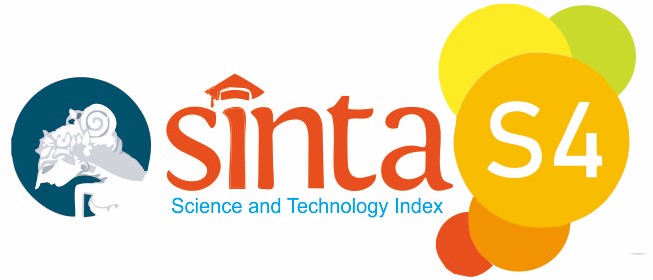Digitalisasi Pelayanan Administrasi Kependudukan di Desa Taunbaen Timur Berbasis Website Menggunakan Metode Prototype
DOI:
https://doi.org/10.30872/atasi.v2i1.465Keywords:
Population Administrarion, Information System, Website, Prototype MethodAbstract
One of the main tasks of a village office is the population administration handling and permit paperwork service. The village population administration handling at East Tuanbaun Village, the sub-district of North Biboki, the District of North Central Timor up to the current time, is still implemented conventionally. The data processing management, such as letter of recommendations, document filing are still conventionally recorded in books. Such conditions are considered very ineffective and undeniably very time consuming, particularly when someone is trying to find data. Apart from that it is very lackadaisical and results in long queue whenever people come to get their paper work done. We, in this research, develop website-based information system for population administration service named SIADES. This website platform is chosen as it can be easily and freely accessed from any place at anytime. This application is developed using prototype method, providing the system development method can give access to the interaction between the user and the developer. The existence of this application can help the village officers and the society in handling letters of permit. People don't have to come to the village office to get their permit/recommendation letter since they can do it using online website service. On top of that, all the digitally saved data will remain safe and long-lasting.
References
Christian, A., Hesinto, S., Patra No, J., Sukaraja Kecamatan Prabumulih Selatan, K., & Selatan STMIK Prabumulih, S. (2018). Rancang Bangun Website Sekolah Dengan Menggunakan Framework Bootstrap (Studi Kasus SMP Negeri 6 Prabumulih). Jurnal SISFOKOM, 07(1), 22–27.
Fitria, C. N., Hermawan, H. D., Sayekti, I. C., Selfia, K. D., Azra, A., & Prasojo, I. (2021). Pengembangan Digitalisasi Sekolah Berbasis Website pada Era Komputasi Global di SMP Muhammadiyah. Buletin KKN Pendidikan, 3(1), 1–10. https://doi.org/10.23917/bkkndik.v3i1.14665
Fridayanthie, E. W., Haryanto, H., & Tsabitah, T. (2021). Penerapan Metode Prototype Pada Perancangan Sistem Informasi Penggajian Karyawan (Persis Gawan) Berbasis Web. Paradigma - Jurnal Komputer Dan Informatika, 23(2). https://doi.org/10.31294/p.v23i2.10998
Ghufron, M. A. (2018). Revolusi Industri 4.0: Tantangan, Peluang Dan Solusi Bagi Dunia Pendidikan. Seminar Nasional Dan Diskusi Panel Multidisiplin Hasil Penelitian & Pengabdian Kepada Masyarakat, 332–337.
Lenak, S. M. C., Sumampow, I., & Waworundeng, W. (2021). Efektivitas Pelayanan Publik Melalui Penerapan Electronic Government di Dinas Pendidikan Kota Tomohon. JURNAL GOVERNANCE, 1(1), 1–9.
Manek, S. L., Kelen, Y. P. K., Tey Seran, K. J., & Manek, P. G. (2022). Pengembangan Sistem Informasi Pengolahan Data Guru dan Pegawai pada SMA Negeri 1 Tasifeto Barat Berbasis Website. Jurnal Saintek Lahan Kering, 5(2), 40–43. https://doi.org/10.32938/slk.v5i2.1999
Muharam, R. S., & Melawati, F. (2019). Inovasi Pelayanan Publik Dalam Menghadapi Era Revolusi Industri 4.0 di Kota Bandung. Jurnal Administrasi Publik, 1(1), 39–47.
Ndaumanu, R. I., Suwarti, Kristina, Guterres, J. A. D., Dewi, R., Amna, Suarezsaga, F., Susanti, W., Thayf, M. S. S., Marlina, & Simeru, A. (2022). Tahapan - Tahapan Rekayasa Perangkat Lunak (F. M. H. Tjiptabudi, Ed.; 1st ed., Vol. 1). Media Sains Indonesia.
Nuryansyah, A., & Ratnawati, D. (2020). Pengembangan Sistem Informasi Sekolah Berbasis Website Di SMK Taman Karya Madya Ngemplak. JINTECH: Jurnal of Information Technologi, 1(2), 21–31. www.journal.ar-raniry.ac.id/index.php/jintech
Oktaviani, N., Widiarta, I. M., & Nurlaily. (2019). Sistem Informasi Inventaris Barang Berbasis Web Pada Smp Negeri 1 Buer. Jurnal JINTEKS, 1(2), 160–168.
Prasetyo, B., & Trisyanti, U. (2018). Revolusi Industri 4.0 Dan Tantangan Perubahan Sosial. Strategi Pembangunan Nasional Menghadapi Revolusi Industri 4.0, 22–27.
Rohida, L. (2018). Pengaruh Era Revolusi Industri 4.0 terhadap Kompetensi Sumber Daya Manusia. Jurnal Manajemen Bisnis Indonesia, 6(1), 114–136.
Sugiman. (2018). Pemerintahan Desa. Binamulia Hukum, 7(1), 82–95.
Tangkudung, I., Dako, R. D. R., & Dako, A. Y. (2019). Evaluasi Website Menggunakan Metode ISOIEC 25010. Seminar Nasional Teknologi, Sains Dan Humaiora 2019, 88–107. http://www.ung.ac.id,
Tey Seran, K. J., & Naiheli, V. N. (2021). Pengembangan Media Promosi Potensi Desa Oepuah Dengan Menggunakan Metode Waterfall. Journal of Information and Technology Unimor, 1(1), 31–36. https://doi.org/https://doi.org/10.32938/jitu.v1i1.1373
Widiyanto, W. W. (2018). Analisa Metodologi Pengembangan Sistem Dengan Perbandingan Model Perangkat Lunak Sistem Informasi Kepegawaian Menggunakan Waterfall Development Model, Model Prototype, dan Model Rapid Application Development (RAD). Jurnal INFORMA, 4(1), 34–40. https://doi.org/https://doi.org/10.46808/informa.v4i1.34
Wirawan, V. (2020). Penerapan E-Government dalam Menyongsong Era Revolusi Industri 4.0 Kontemporer di Indonesia. Jurnal Penegakan Hukum Dan Keadilan, 1(1). https://doi.org/10.18196/jphk.1101
Yoko, P., Adwiya, R., & Nugraha, W. (2019). Penerapan Metode Prototype dalam Perancangan Aplikasi SIPINJAM Berbasis Website pada Credit Union Canaga Antutn. Jurnal Ilmiah Merpati, 7(3), 212–223.
Zaliluddin, D., Budiman, & Rully, A. (2020). Implementasi E-Government Berbasis Android. Jurnal Sistem Informasi, 7(2), 83–88.
Zulfikar, Rozaili, & Hansyar, R. M. (2022). Kebijakan dan Implementasi Administrasi Kependudukan di Indonesia.














